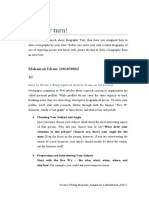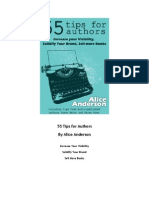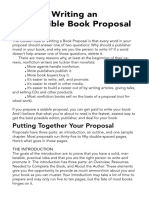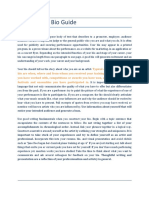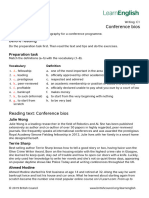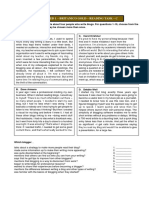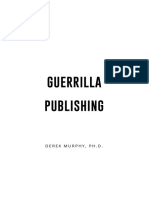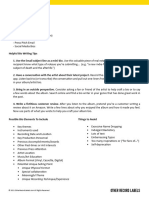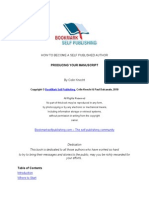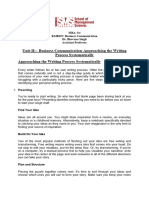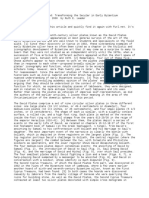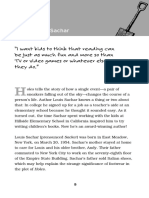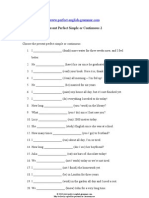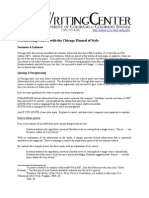0% found this document useful (0 votes)
70 views4 pagesHow to Write an Effective Author Bio
The document provides tips for writing an effective author biography or bio. It discusses that an author bio is an important part of branding and should reflect the author's work and personality. The tips include distancing the author persona from the personal self, committing to a genre, including contact information, keeping it brief, being humble, adding personal details, and tailoring it for fiction versus nonfiction works. The second document provides additional examples of short, interesting author bios that introduce the author and encourage connecting with them online or via email.
Uploaded by
amanda nisa natashaCopyright
© © All Rights Reserved
We take content rights seriously. If you suspect this is your content, claim it here.
Available Formats
Download as PDF, TXT or read online on Scribd
0% found this document useful (0 votes)
70 views4 pagesHow to Write an Effective Author Bio
The document provides tips for writing an effective author biography or bio. It discusses that an author bio is an important part of branding and should reflect the author's work and personality. The tips include distancing the author persona from the personal self, committing to a genre, including contact information, keeping it brief, being humble, adding personal details, and tailoring it for fiction versus nonfiction works. The second document provides additional examples of short, interesting author bios that introduce the author and encourage connecting with them online or via email.
Uploaded by
amanda nisa natashaCopyright
© © All Rights Reserved
We take content rights seriously. If you suspect this is your content, claim it here.
Available Formats
Download as PDF, TXT or read online on Scribd
/ 4













